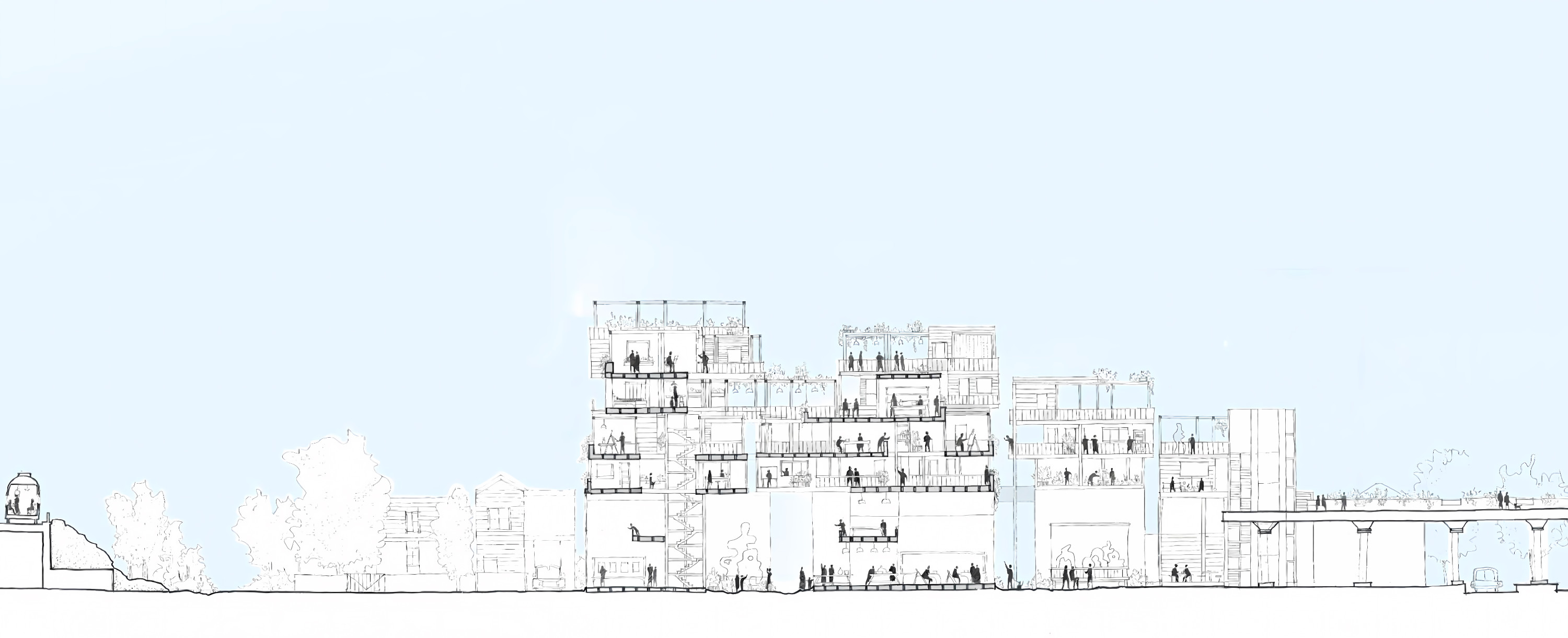Upzoning for all
Broad upzoning to increase housing delivery and fight against landbanking.
As detailed in Melbourne’s Missing Middle, broad upzoning is the best, most equitable approach to creating housing abundance for all.
Our proposed city-wide upzoning is focused around Melbourne’s extensive train and tram networks, with the goal of enabling more people to utilise our city’s existing infrastructure, and to live in the places that enable them to experience the best Melbourne has to offer.
How zoning will change

We have taken existing zoning controls, and upzoned accordingly:
- All low-density residential lots within 500m of a tram stop or 1km of a train station are rezoned to the six-storey Missing Middle Zone (MMZ).
- Any lot in a General Residential Zone not near trams or trains is rezoned RGZ (Residential Growth Zone).
- Any lot in a Neighbourhood Residential Zone not near trams or trains is rezoned GRZ.
The effect of these changes will be to upzone the vast majority of inner-middle Melbourne’s residential land, enabling more homes to be built within existing communities.
A new Missing Middle Zone

The Missing Middle Zone (MMZ) will enable 6 storey buildings to be built within walking distance of every train station and tram stop in Melbourne. This zone will support the density levels that underpin great and iconic cities across the world, with beautiful street walls free of onerous setback rules, activating the streets below.
This new zone is a refinement of the existing Residential Growth Zone (RGZ), and has been altered in four key ways. The MMZ:
- Implements a default maximum height of 21 metres or 6 storeys, an increase from the RGZ’s current 4-storey default.
- Expands non-residential land uses to include a wider range of neighbourhood services & amenities.
- Abolishes car parking minimums.
- Exempts from notice and review developments of any total value containing at least 10% public or community housing in perpetuity
MMZ areas will be entirely mixed-use, and buildings across the area will be permitted by-right to include neighbourhood services and amenities, cafes, libraries, and shops on the ground floor. Off-street parking will be allowed, but thanks to the absence of parking minimums, nobody will be forced to buy a car park that they don’t need.
Upzoning Melbourne-wide
Not all of Melbourne’s suburbs have access to rail infrastructure but many still benefit from nearby schools, hospitals and bus routes. Local communities and businesses that aren’t as closely situated to Melbourne’s vast train and tram networks also deserve to reap the densification benefits the Missing Middle reforms will provide.
Inspired by the success of Auckland’s zoning reforms, the Missing Middle reform will completely eliminate the Neighbourhood Residential Zone (NRZ) across metropolitan Melbourne, replacing it with General Residential Zone (GRZ). In turn, all land currently zoned GRZ will also be upzoned to the Residential Growth Zone (RGZ).
Creating excess zoned capacity
Currently, Melbourne’s planning system purposefully limits zoned capacity. This creates two key problems:
- it limits housing development, and
- it encourages land speculation.
To enable housing abundance, we must move to a better system. To build abundant housing, we must first build abundant housing capacity.
Enabling new housing development
Under the current system, the zoned capacity of each LGA is kept only barely higher than the number of homes that need to be built.
But limiting zoned capacity relies on the impractical idea that every potential lot will be built to its maximum zoned capacity within a reasonable timeframe.
This almost never happens, for several reasons:
- Some sites are too difficult or expensive to build on
- Some sites have existing vital community or commercial functions and cannot be turned into more housing
- Some owners enjoy their homes as is, and do not want to sell to developers
By making a much larger number of lots eligible for development at any given, we can enable more diverse housing to be built across Melbourne, enabling more people to choose the housing typology that best suits their wants and needs.
Fighting against landbanking
Limited zoned capacity creates the potential for land speculation and landbanking. Where there are only a few plots of land where it is possible to build, a small number of speculators can feasibly control and exploit that scarcity to inflate prices. This creates a vicious cycle where the cost of land is driven up, making it harder for developers to build, and for people to buy homes.
This is why our reforms create a large increase in zoned capacity. We do not expect the capacity to ever be met in any given LGA. What we do expect, though, is for landbanking in these LGAs to become unviable. By making developable land abundantly available through broad upzoning, each individual land-holder will face much more competition, making it harder to withhold housing supply.
Zoned capacity increase
While the numbers above are very large, it is important to note that we do not expect all of this capacity to be used. A system that relies on the majority of zoned capacity being developed is not practical. Through broad upzoning, we can increase the number of homes that will be built across our city, and reduce landbanking. This is the best way to lower housing costs across Melbourne and build more homes where people want to live.